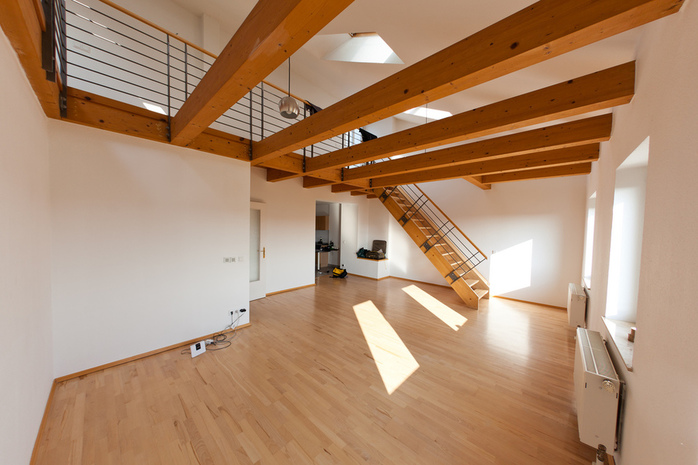Your Trusted Partner in Real Estate. Contact me at 250-732-1419 for all your property needs.

Green, cutting edge, technological, luxurious, and entertaining are adjectives that best describe where housing trends are heading. While the word trends suggest a fleeting fancy, the forecast suggests that we are on the cutting edge of some fantastic innovations that are not only here to stay, but will continue to grow and evolve, influencing potential future home trends.

Building trends are showing scaled down, smaller homes. Gone are the days of superfluous, excessive and opulent. Newer homes, as well as designs within are much more streamlined. Even the furniture industry is showing simpler, more scaled-down models. The oversized, “fluffy” couches are being replaced by models that are more minimal in style and feel, with a very mid century influence. As a result of these smaller-scaled homes people are making much more efficient use of their space.
Large home offices are no longer sought after. Pocket offices are one of the top trends in home design, according to the National Association of Home Builders. The rising popularity of several generations living together under one roof may have helped to fuel the trend. Unused spare bedrooms were turned into home offices. These home offices are being converted back into bedrooms to accommodate grown children that are returning to the nest, or elderly parents needing to be looked after.

This certainly is not a trend. Green is most definitely mainstream. It’s not going anywhere as it’s here to stay and we will see a rise in all things green, environmentally friendly and sustainable from building materials, paints, windows, floorings, windows, countertops, plumbing and electrical. There is an increasing demand for eco-friendly paint and adhesives. Home furnishings and accessories are following this path.

Despite the downsizing of the family home there are certain luxury items that are in demand. Saunas are once again becoming popular and are being added to master bathrooms and pool areas. Media rooms have been on rise for some time. With more families staying home, vacationing less and spending less on entertainment venues, these homeowners are investing their money in rooms designed for specifically for multimedia entertainment devices, according to the National Association of Realtors.
Consumer Reports states that home elevators are on the rise, especially in well to do and multi-generational homes where elderly relatives may have a harder time with the stairs. Multi-generational living is also driving force behind basement conversions. Basements, once a place for the young to hang out and entertain, are now being reconfigured to create separate living spaces for in-laws complete with kitchens, bedrooms and a separate living space.

Homeowners are moving outdoors, especially those who are spending more time at home. Porches, patios, decks, terraces and verandas are no longer just outdoor spaces; they have become outdoor living areas where homeowners go to relax, spend time with their families, dine or entertain guests. We are also seeing an increase in outdoor kitchens for cooking and dining. These kitchens are equipped with built-in grills, sinks, storage, refrigeration, countertops and beer taps.
These outdoor cooking areas are being designed to resemble the indoor kitchens. High end appliances, movie screens, outdoor furnishings, fireplaces and fire pits, as well as television and audio systems are rising in popularity. Reflective of our interest in the environment and our health, outdoor vegetable gardens are also in soaring in popularity.

Following hot on the heels of outdoor dining and entertaining is the outdoor shower. Outdoor showers, and outdoor bathrooms in general are quickly gaining popularity. With creative landscaping a sense of total privacy can be achieved. 50 years ago it was uncommon for a single-family, 3 bedroom home to have more than one bathroom, now it is the norm. The outdoor bathroom too will become commonplace one day. These outdoor bathing areas are far from rustic, to the contrary, they are eco-friendly luxuries.

Technology is becoming more and more affordable and more and more commonplace. A new type of generator, created by General Electric, can be monitored and activated from a smart phone, giving an out of town homeowner peace of mind. Touchscreen deadbolts, and thermostats that can be programmed remotely will one day be commonplace. The rise of smart appliances that are focused on energy savings will eventually make way for more affordable models thus being more readily available. At this point they are still quite cost prohibitive.
No matter the size of the house, stylish kitchens and bathrooms remain at the top of many wish lists. Many homeowners are remodeling their homes instead of building on to them. The latest trend in kitchen design is the transitional look which is a combination of both traditional and contemporary design.
Because so much time is spent living, not just eating, in the kitchen, these rooms are being redesigned to accommodate the events that take place in the kitchen, from homework, to socializing to cooking and eating. Kitchens are designed for larger crowds, even putting its chef on display with plenty of seating for the viewers. The rise in popularity of gourmet kitchens with upscale appliances, top notch lighting show no sign of slowing down.
1. Breaking the news
Breaking the news of your move can be one of the most critical moments of the entire process. Use the first announcement to explain to your kids how you think the move will benefit the whole family. You’re going to want to bring the kids in on the moving process by having them help out, but don’t cross that bridge just yet — leave this for after the initial talk. If you have more than one kid, address each of them later in private once they've had some time to let it all sink in. Express to them personally what you’re expecting. Kids are aspirational, and if you make it clear to them that you need their help as part of the process, they’re more likely to step up and help out. Being as open and clear about what moving entails will always be better in the long run. With young children, don’t assume that they'll have a good grasp on what it all means right away. Patience is the key.
2. Keep the lines of communication open
Take the time to talk to your kids about the move. If applicable, ask them what room in the house they'd like, or how they want it to look. Use these conversations as an opportunity to explain the things you think they'll like about the neighbourhood you’re moving to. Take your children seriously and listen to their feelings and concerns even when you can’t address their desires directly. Sometimes, more than anything, children just wants to know that they've been heard, even if they can’t have their way.

3. Out with the old
This part of the process will depend a lot on the temperament of your kids, but it's time to pare down the household and make room for the new. Getting rid of old stuff can be a pain, or it can be a fun family activity (and as a bonus, you can have a garage sale at the end of it!). It can be tedious and time-consuming to try to go through your child’s things, having to ask them piece by piece what they want to keep or give away, but if you get the kids excited with the prospect of a garage sale, then the kids will do a better job sorting than you ever could. Margaret, mother of two, has another take:
We have moved back when I was still expecting. The only thing that we learned from the experience is to unpack things only as they are needed: emotional mementos and actual necessities. This way, whatever is still in boxes after 60 days can be easily disposed of.
Paring down can be some of the hardest work of moving, so make it easy on yourself.
4. Timing is everything
If you can, try to time the move around the more stable periods in your kids’ lives. Moving during the school year can be disruptive and make integration into the new community and school environment much more difficult.
5. Take advantage of relatives and friends
If you have small children, every minute they can be in another’s care will make the moving process that much easier. If your kids are a bit older, these can be opportune days for them to say their prolonged goodbyes to their friends in the neighbourhood. This will also allow you to space out the packing process a lot more.
6. Pack small boxes of the kids' things last
Go through the contents of these special, easy-access boxes with your kids item by item, and label them well! Don’t make the mistake of packing a favourite toy, book, or videogame too soon. When you arrive at the new place, you likely won’t have the luxury of friends and family that can entertain the kids while you sort through your new life, so you’ll want to have the kids entertain themselves for a time while you get to sorting through boxes. Jennifer, mother of two, also advises:
Make sure vaccination cards, medicine, any prescription they may have and medical insurance papers are readily available and not stuck in some anonymous package.
These are not the sorts of items you don't want to have to hunt around for should the need arise in a new place.

7. Saying Goodbye
You’re likely leaving a lot of people behind that you and your children had relationships with. A goodbye party can be a great way to bookend your time with the old place. If you can, though, have your neighbour or family member host the event. This can double as a goodbye present and will also save you the nightmare of planning a party in a half-packed house.
8. Familiarize your family with the new neighbourhood
Research the opportunities and activities that are close to your kids' hearts. Don’t just tell them about it; show them! It can be easy to be a bit of a hermit when you’ve just moved to a new place and don’t know anyone, so your kids might just need a push in the right direction. If they’re teenagers, mind that you don’t push too hard, but letting slip about the local youth culture and music scenes in the early days can pay later.
9. Keep the familiar that works
Routine can be very comforting in new environments and can help children deal with separation anxiety. Do your best to keep important family times and activities the same as soon as you can after arriving at the new house. Family meetings, dinners, weekly traditions — try to keep these consistent or go out and find a new local equivalent to meet your needs. Modifying old traditions in this way can also allow you to bridge the gap between the old and new and make the new place feel like home a lot quicker.

10. Remember your own needs
You’re doing a lot of work to make your kids comfortable with the move and you’re doing your best to make the process as painless as possible for them. You know it will be better for them in the long run, but sometimes that still won’t mean they understand right away. It’s okay. In all of this, remember to treat yourself with as much consideration and kindness as the rest of the family. You’re doing your best and a lot is counting on you. It's okay to make mistakes, and moving is stressful business. Relax. Breathe. It’s going to be great.


Your Trusted Partner in Real Estate. Contact me at 250-732-1419 for all your property needs.